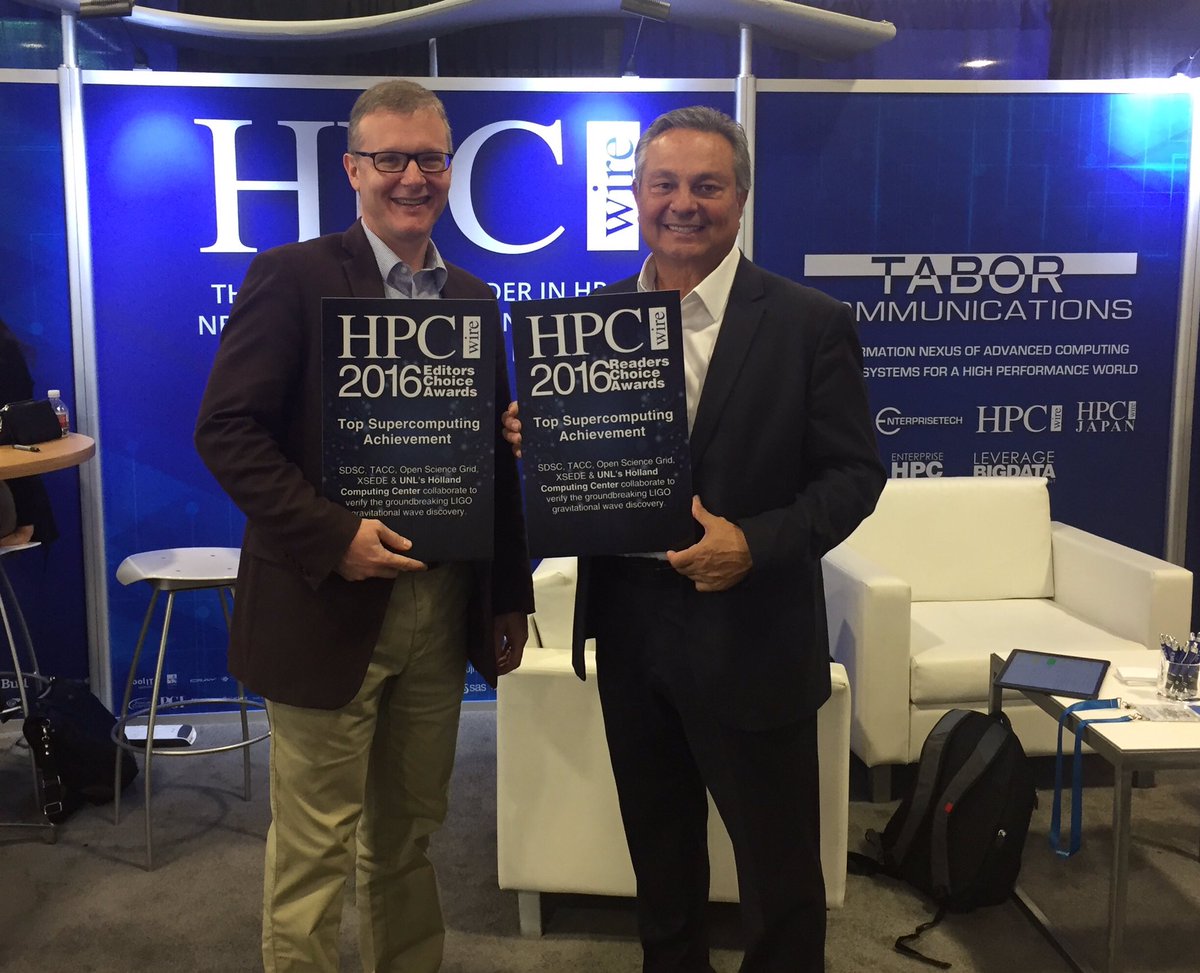Dec 19, 2016
By Victoria Grdina

One of the biggest science discoveries of 2016 was made possible in part by the University of Nebraska. Now the university’s Holland Computing Center is being recognized for its key role in the research project.
HCC received two HPCwire Top Supercomputing Achievement awards at the 2016 International Conference for High Performance Computing, Networking, Storage and Analysis in Salt Lake City, Utah. The awards were received in collaboration with Open Science Grid (OSG) and other collaborators for the use of high throughput distributed computing to verify the existence of gravitational waves. HCC and OSG shared Readers’ Choice and Editors’ Choice awards in HPCwire’s online publication with SDSC, XSEDE and TACC—all heavy hitters in the computational science field.
“It recognizes that we made a significant contribution in this area,” said David Swanson, Director of HCC. “The fact that we were actually part of the winning team on two awards is a big deal.”
The first direct evidence of gravitational waves was detected last year by the U.S-based Laser Interferometer Gravitational-wave Observatory (LIGO)—almost a hundred years after they were first proposed by Albert Einstein in his theory of relativity. Through the utilization of supercomputers and analysis of data all over the world, scientists were able to help confirm the existence of gravitational waves in February.
“The analogy a lot of people use is that gravitational waves are like a new ‘sense.' Visible light telescopes allow us to see the universe, but gravitational waves allow us to 'hear’ it,” said Brian Bockelman, research assistant professor of computer science and engineering. “Gravitational wave astronomy may completely revolutionize the area.”
LIGO received assistance from OSG, a global consortium of about 50 institutions that share resources internationally and collaborate on scientific projects. XSEDE, TACC, and the San Diego Supercomputing Center also took part in this project to collect and ensure the accuracy of many forms of data. HCC played a key role as the central hub through which all of that data was moved and stored.
“The nifty thing about this project is that LIGO was able to utilize both the shared resources and the centrally planned and allocated resources,” said Bockelman, who also heads up a division of OSG responsible for software and technology.
Through Bockelman’s guidance, HCC was responsible for storing several terabytes and ultimately completed one petabyte of data transfers to OSG partners for processing, something that was imperative for performing consistent and accurate analysis.
“The hope is that someday they have a worldwide network of these [detectors], and the idea is that they can kind of do astronomy,” Bockelman said. “They’re hoping this will become a huge field in astronomy over the next decade.”
Bockelman also says HCC has plans to move into phase two of the computational project this year, as LIGO starts to record more data. The collaboration will also likely expand to the Netherlands, France, Italy, Canada, and new supercomputing sites like Blue Waters at the university’s Big 10 partner institution, the University of Illinois Urbana–Champaign (UIUC). Not only will the project expand with collaborators, but this project will also require an expansion of local data storage from five to 15 terabytes.
Bockelman said that he was proud to represent Nebraska on such a large-scale global project and hopes the national recognition will allow HCC to participate in more exciting endeavors going forward. Nonetheless, the first priority remains right here in Nebraska.
“We’re a Nebraska-centric organization,” Bockelman said, “and while we take part [in] these other big scientific projects, we don’t want it to only benefit them, but also anybody else who could use this style of computing.”
More details at: http://hcc.unl.edu/hcc